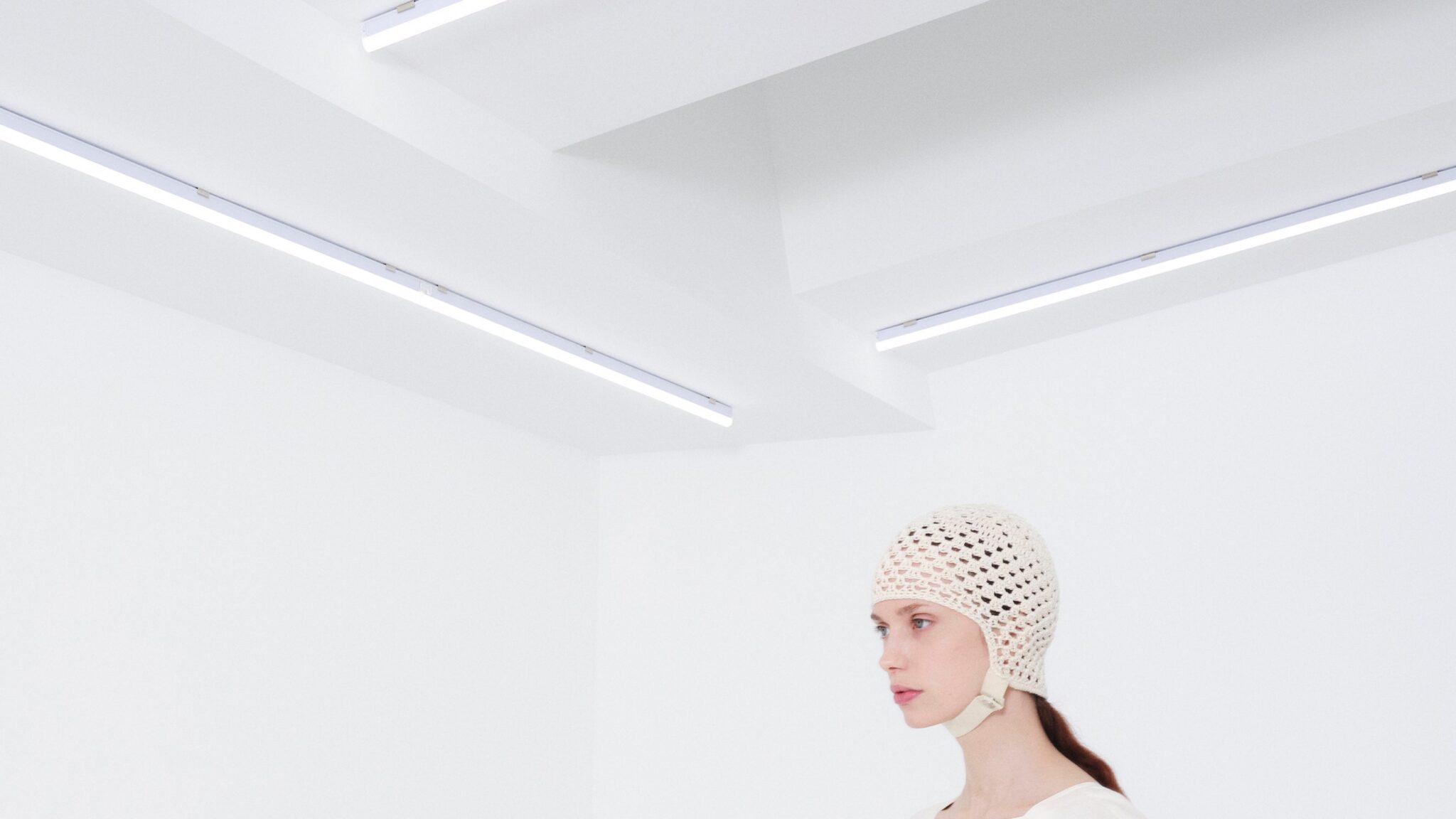Niccolò Pasqualetti has the rare ability to give clothes an object life, meaning that they are interesting in themselves. This can be explained by the designer’s experience with jewelry (including his time at Alighieri), but perhaps it is better understood as part of a larger story. This Italian has created a world with wavy and amorphous boundaries, where gender and genre are no longer distinguished, and flat-patterned pieces are blown up into 3D wonders. The most dramatic example of this in the spring collection was a papery dress in candy colors. (Imagine a sheath dress that had eaten popstones and exploded with soft shapes.) Making it, Pasqualetti noted, was like sculpting.
Pasqualetti is a designer of great sensitivity who can apply a kind of magic to classical pieces, often through the use of curved pattern pieces. The work is a bringing together of straight and curved lines in a way that plays with volume, gesture and time. That remained the case this season, but the surreal aspects “became vaguer” and there were fewer of them, making room for “more wearable, everyday urban pieces, where you have a lot of functionality, this time with a lot of pockets.” said Pasqualetti. These appeared on outerwear pieces such as an oversized hooded leather jacket and an orange nylon-cotton faille vest. They also appeared on tie-down tool bibs/bags. A dark chocolate version was worn around the neck of a model in Pasqualetti’s signature (and much copied) skirt pants and a scalloped-edged tunic. This round shape was created by draping with a kind of Flemish touch, consisting of a rectangular bib and the skirt made of a lighter, more flexible material. The designer described it as a sarouel style, with added buttons that allow for customization. (Drawstrings served a similar purpose on a shirt/cape.)
This circular motif that rippled throughout the lineup, which Pasqualetti described as “subtle details of flowers, like minimalist flowers,” spoke both to the organic shapes the designer is drawn to and to a sense of play. Within this context, a kind of camp shirt with two pockets and steel details seemed ready for a glamping trip, especially when paired with light brown trousers that were cut large and had a volume that was luxurious, almost baroque. One of the designer’s goals was to integrate jewelry into the clothing and looks. Listening to Pasqualetti talk about this integration, I was reminded of Raf Simons’ comment that Prada’s metal-fringed skirts were “built like jewelry.” It’s an atmosphere. The drops (not tears, but “third and fourth eyes,” Pasqualetti said) that fell from steel glasses also embellished garments. (There was also a chain version of the glasses.) Contrasting the hardness of steel was the suppleness of upcycled metallic pink leather, an unexpected and welcome surprise.





